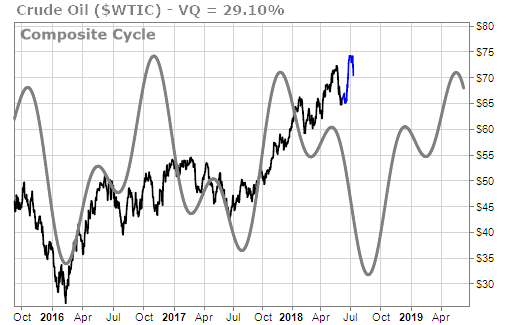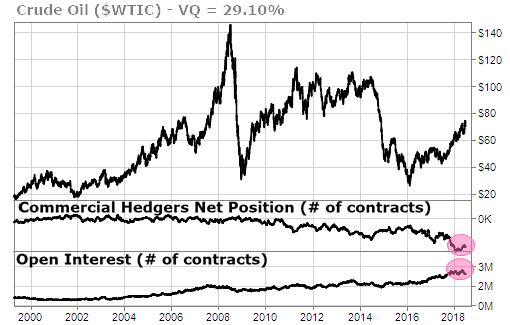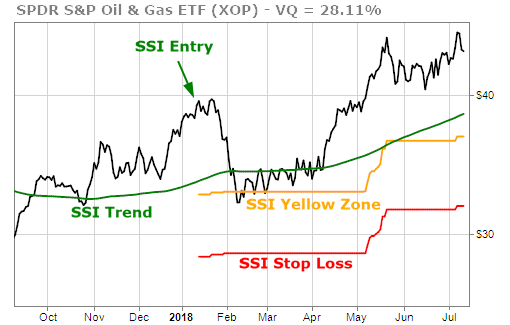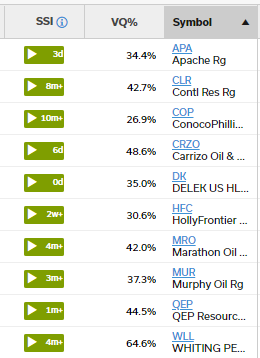One of the first casualties in the opening salvos of the U.S./China trade wars was the price of oil.
After trading near $75 on Tuesday, the price of West Texas Intermediate Crude (WTIC) oil dropped to $70 on Wednesday and down below that yesterday.
The media tells us that oil traders are concerned that the trade wars could cause a slowing down of the global economy.
We’ve been bullish on oil for more than two years after it moved above $40. Most recently, when oil dropped 10% in June, we told you that it was a second chance to get into oil.
With this week’s drop, we want to reiterate that we’re still bullish. Here’s
why …
The Volatility Quotient (VQ) of oil is 29.1%. The 6% move we’ve seen is barely a drop in the bucket.

We’re still $9 away from touching the Stock State Indicator (SSI) Yellow Zone and $18 away from hitting the SSI Stop signal.
We warned you in June that the price of oil could move lower for the next few months. Our proprietary time-cycle forecast shows that the path of least resistance is to the downside until August or September.

The Commitment of Traders chart shows that the commercial traders have had record short interest and record open interest. This means the producers of oil have been locking in these four-year high prices and protecting their profitability against a potential downturn.

The open interest is beginning to ease, and the short interest has also contracted over the last couple of months. This could also be an indicator that oil has seen a short-term high but this does not change our bullish long-term posture.
With oil prices dropping, how has that affected the oil producers? It really hasn’t.
We highlighted XOP, the S&P Oil and Gas Exploration and Production ETF, just over a month ago. Since then XOP rose almost 10% from the $40 range to more than $44 this week before dropping off to $43 at yesterday’s close.

XOP has a VQ of 28.2%, which is just slightly lower than the VQ for oil itself. But even though its volatility is almost the same, the price of XOP dropped only half of what oil dropped this week. That’s a positive sign.
Another positive sign is that all 10 stocks that were the top 10 holdings a month ago are now in the SSI Green Zone. A month ago, eight of the 10 were in the SSI Green Zone.

Since oil is more volatile than most people realize, it makes it challenging to invest successfully in the oil patch. Oil’s volatility also makes a ripe target for the financial media to work naïve market followers into a lather.
You can ignore it … and pay attention to the TradeStops VQ and SSI signals. Oil and oil stocks are still in solid uptrends. If we do see prices dip through the summer, it will more than likely be a great opportunity to buy at a lower-risk point.





